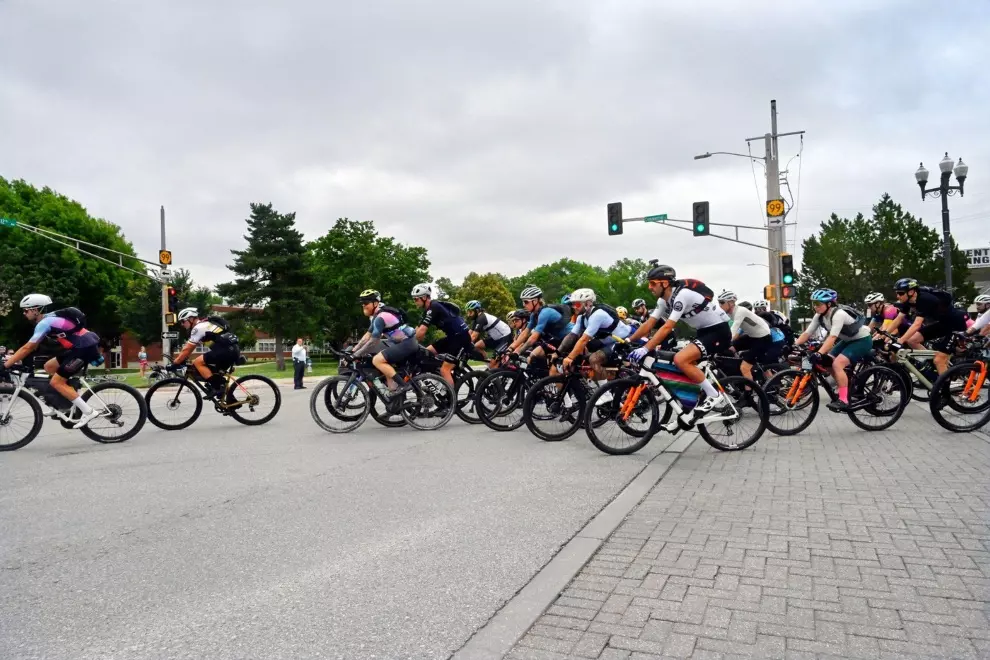Moreover, I weighed a massively unhealthy 130kg (for a 174 cm-high guy) and was as ill-equipped as they come. Still, the entire 101-km route took me about 12.5hours. There was a lot of puffing, huffing, and doubting whether I should quit. Thankfully, I had some friends with me who were determined to show me the way
I could barely walk and I didn’t feel my butt for about three days.
Today, I can do a 100K back-to-back with no problem at all. Moreover, it takes me just under 8 hours, as this year, I’m aiming to make it 7:30. So, yes, practice makes perfect. Still, even without practice, a 100K—2000 D+ ride is quite achievable (as long as you are medically fit, of course).
Regardless, if you don’t want to struggle and curse the day you decided to try this ride, there are several things you can do to make your experience a lot better.
Training
While I embarked on my first 100K without any previous training, this was definitely not the wisest decision I’ve ever made. If I had taken the time to ride at least several 100K on the flat before that, I’d know that sitting on the saddle for so long takes its toll on your butt. Moreover, the fitter you are, the faster you’ll be able to finish the route. But, if it’s your first time, a wiser decision is to focus on finishing rather than bursting your legs trying to achieve time.
Building endurance, strength, and core training will allow you to take shorter breaks less often, significantly decreasing your time and increasing the journey’s pleasure.
Most importantly, however, practice mountain climbing with your bike. There is nothing more daunting than a 10-12% gradient climb on the 80th kilometer. It almost feels like a wall. Still, with some proper training, you will be able to conquer those as well.
Do it with the right people
Now, most things I’ve read will focus on your bike and how you should clean, lube, and all that jazz. So, instead of focusing on the obvious, let’s talk about those who will help you finish the route. Your mates are just as important to your success as your bike and training. If you go on this route with people who are unwilling to wait for you or are trying to beat their own records, quitting before the finish line is way more likely.
Furthermore, make sure at least one of your mates knows the way. Constantly checking your track will ruin your pace and concentration, making the entire experience more unpleasant.
Finally, make sure to have someone ready to come and get you if you decide to quit (or, God forbid, get an injury). Not feeling pressured to finish it all is definitely going to help you psychologically.
Take a look at the route
Make it your business to know the route. This will help you visualize and mentally prepare for the challenge. For example, if you are going up a steep climb, you will know how long it will take you to conquer it. Moreover, you will know whether you should ride conservatively (if there are other climbs after this one) or whether you should go all-out (if this is the last one).
Finally, knowing where you can replenish your food and water is crucial for knowing what to pack.
What to bring along
Well, it all depends on your route, of course. Still, you must get at least some food, a raincoat (or a wind jacket), spares, and tools. Practically, it’s not that different from any other ride. I’d suggest over-preparing for your first ride and taking a backpack along. This way, you can get a camelback and don’t have to depend on water fountains along the route. Moreover, you can bring a spare T-shirt and some additional clothes.
Once you’ve made your first two-three 100K rides, you can actually do it without a backpack. It will be much easier, and you will know precisely what to take, how much food you need, and where to get some additional water.
Fueling
Speaking of food, you will definitely need some. It would be great if there was a restaurant or a hut somewhere in the middle where you could actually get a proper meal. Still, you will be on your bike for approximately 8-12 hours, so you will burn through 3,000-5,000 calories. A single meal won’t cut it. You must take some bars and consume at least 400 calories every two hours. Getting energy gels is also a good idea, though you won’t need explosive power as much as you’ll need pure calories.
For your first 100K in the mountains, I’d suggest using the feeding time to take a rest. In other words, just stop, eat a bar or two, and continue forward after that. You don’t need to eat on your bike. You’re not racing yet.
Also, make sure to get some electrolytes. At some point, your body will lose enough salt through sweating that you won’t be able to quench your thirst. Some electrolytes will give you the minerals needed to ensure you won’t dehydrate and begin cramping.
One last thing
That’s basically it. This isn’t rocket science. I mean, it’s still riding your bike. Yes, you will feel tired at the end, but you can do it, absolutely no problems. Still, when it comes to your first try, I’d suggest choosing the day carefully. Make sure there are no strong winds and no chance of rain. Make the entire experience a pleasurable one.
So, ready to go? You are, trust me.





